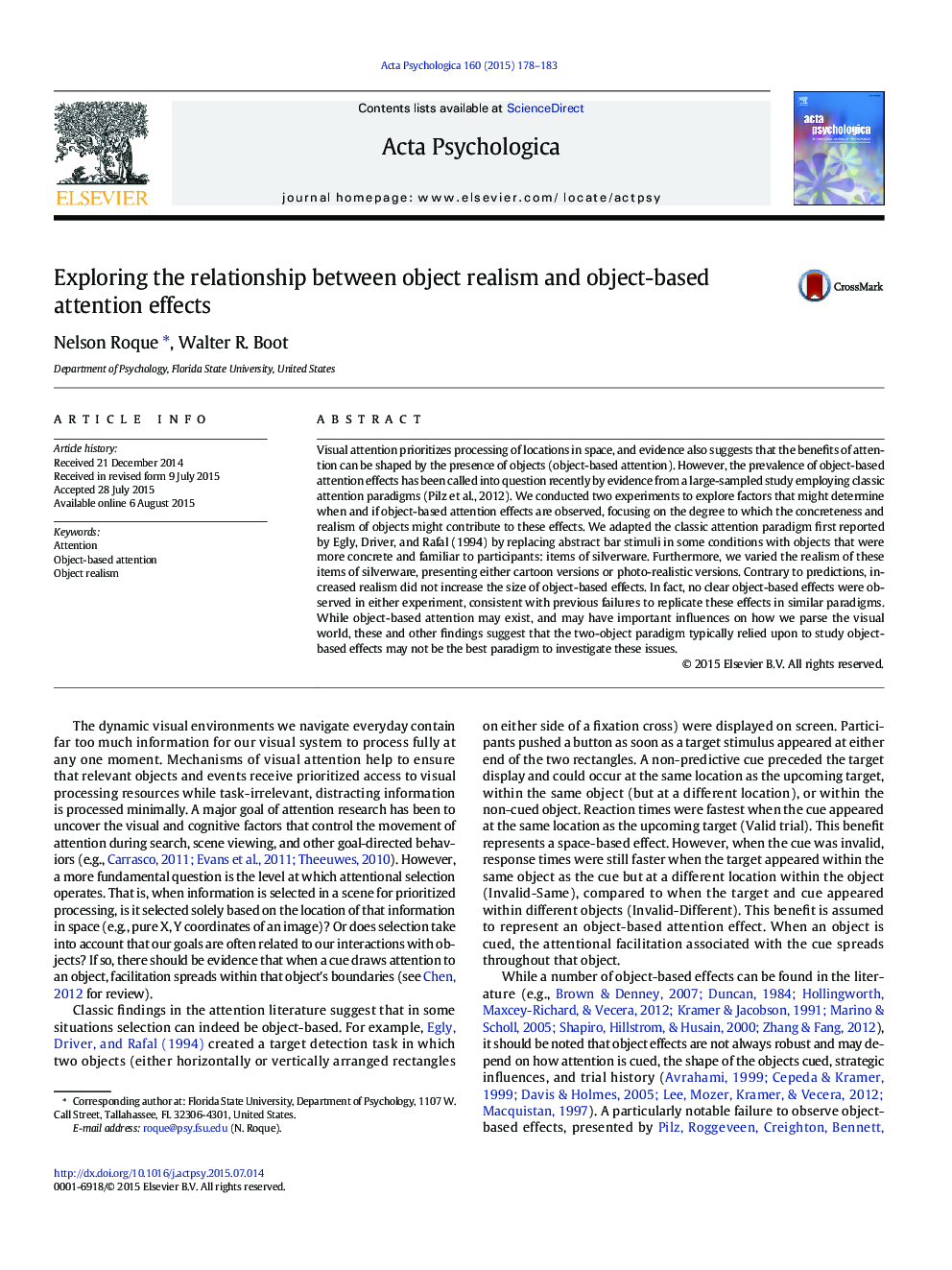| Article ID | Journal | Published Year | Pages | File Type |
|---|---|---|---|---|
| 919693 | Acta Psychologica | 2015 | 6 Pages |
•We explored whether object realism moderates object-based attention effects.•Space-based attention effects were consistently robust.•No effect of object realism on object effect, no evidence for object-based attention•Instead, facilitation when attention crossed vertical meridian, regardless of objects
Visual attention prioritizes processing of locations in space, and evidence also suggests that the benefits of attention can be shaped by the presence of objects (object-based attention). However, the prevalence of object-based attention effects has been called into question recently by evidence from a large-sampled study employing classic attention paradigms (Pilz et al., 2012). We conducted two experiments to explore factors that might determine when and if object-based attention effects are observed, focusing on the degree to which the concreteness and realism of objects might contribute to these effects. We adapted the classic attention paradigm first reported by Egly, Driver, and Rafal (1994) by replacing abstract bar stimuli in some conditions with objects that were more concrete and familiar to participants: items of silverware. Furthermore, we varied the realism of these items of silverware, presenting either cartoon versions or photo-realistic versions. Contrary to predictions, increased realism did not increase the size of object-based effects. In fact, no clear object-based effects were observed in either experiment, consistent with previous failures to replicate these effects in similar paradigms. While object-based attention may exist, and may have important influences on how we parse the visual world, these and other findings suggest that the two-object paradigm typically relied upon to study object-based effects may not be the best paradigm to investigate these issues.
